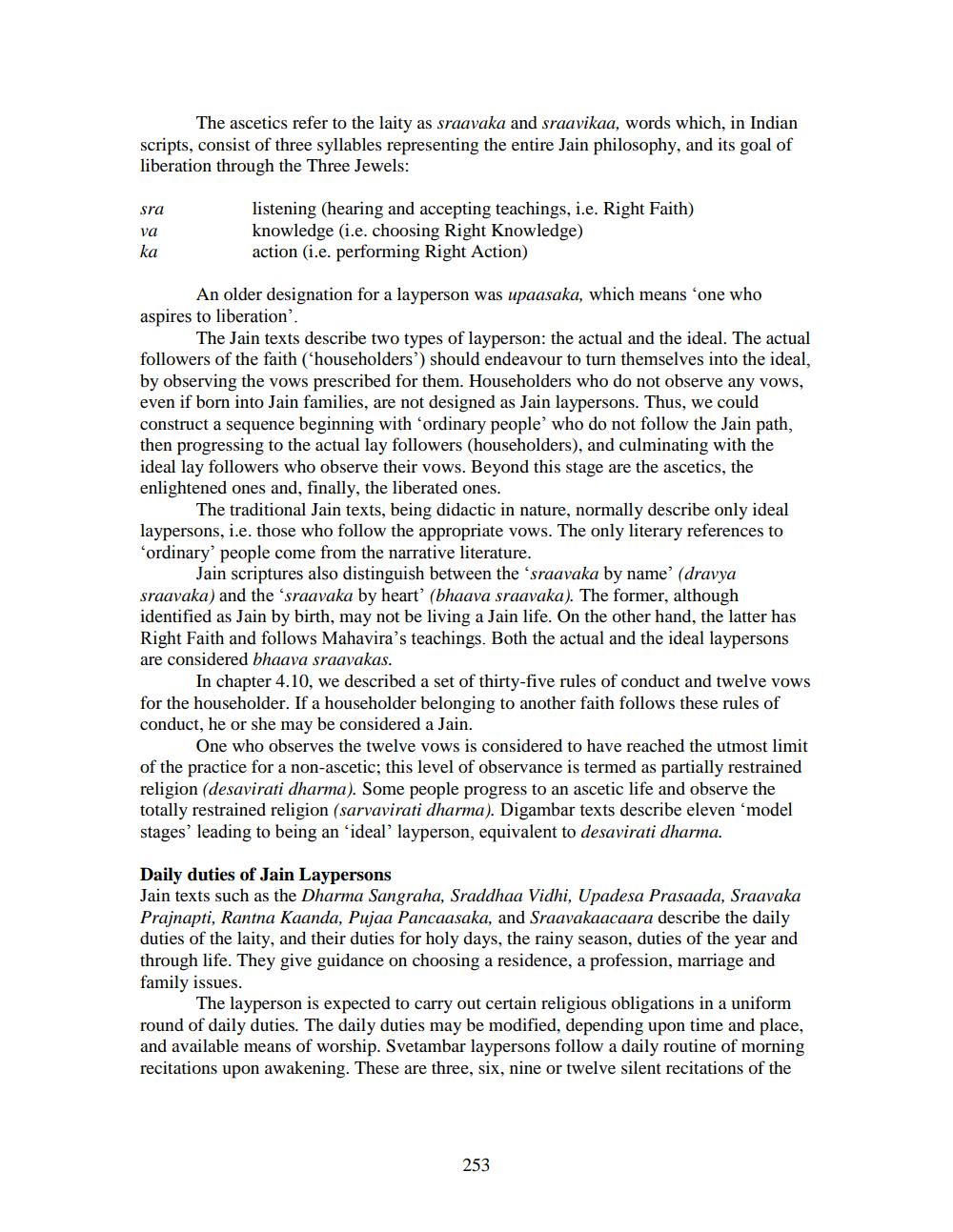________________
The ascetics refer to the laity as sraavaka and sraavikaa, words which, in Indian scripts, consist of three syllables representing the entire Jain philosophy, and its goal of liberation through the Three Jewels:
sra
va
ka
listening (hearing and accepting teachings, i.e. Right Faith)
knowledge (i.e. choosing Right Knowledge)
action (i.e. performing Right Action)
An older designation for a layperson was upaasaka, which means 'one who aspires to liberation'.
The Jain texts describe two types of layperson: the actual and the ideal. The actual followers of the faith ('householders') should endeavour to turn themselves into the ideal, by observing the vows prescribed for them. Householders who do not observe any vows, even if born into Jain families, are not designed as Jain laypersons. Thus, we could construct a sequence beginning with 'ordinary people' who do not follow the Jain path, then progressing to the actual lay followers (householders), and culminating with the ideal lay followers who observe their vows. Beyond this stage are the ascetics, the enlightened ones and, finally, the liberated ones.
The traditional Jain texts, being didactic in nature, normally describe only ideal laypersons, i.e. those who follow the appropriate vows. The only literary references to 'ordinary' people come from the narrative literature.
Jain scriptures also distinguish between the 'sraavaka by name' (dravya sraavaka) and the 'sraavaka by heart' (bhaava sraavaka). The former, although identified as Jain by birth, may not be living a Jain life. On the other hand, the latter has Right Faith and follows Mahavira's teachings. Both the actual and the ideal laypersons are considered bhaava sraavakas.
In chapter 4.10, we described a set of thirty-five rules of conduct and twelve vows for the householder. If a householder belonging to another faith follows these rules of conduct, he or she may be considered a Jain.
One who observes the twelve vows is considered to have reached the utmost limit of the practice for a non-ascetic; this level of observance is termed as partially restrained religion (desavirati dharma). Some people progress to an ascetic life and observe the totally restrained religion (sarvavirati dharma). Digambar texts describe eleven 'model stages" leading to being an 'ideal' layperson, equivalent to desavirati dharma.
Daily duties of Jain Laypersons
Jain texts such as the Dharma Sangraha, Sraddhaa Vidhi, Upadesa Prasaada, Sraavaka Prajnapti, Rantna Kaanda, Pujaa Pancaasaka, and Sraavakaacaara describe the daily duties of the laity, and their duties for holy days, the rainy season, duties of the year and through life. They give guidance on choosing a residence, a profession, marriage and family issues.
The layperson is expected to carry out certain religious obligations in a uniform round of daily duties. The daily duties may be modified, depending upon time and place, and available means of worship. Svetambar laypersons follow a daily routine of morning recitations upon awakening. These are three, six, nine or twelve silent recitations of the
253




